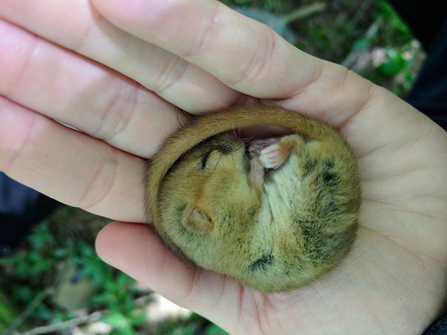You may have seen in recent posts that dormice are in danger. Since 2000, it is estimated that there has been a 70% decline in Hazel Dormouse populations. Here's what actions we're implementing to help:
- Monitoring populations in nest boxes
- Training new staff and volunteers to gain their dormouse handling license
- Trialing new survey techniques – footprint tunnels
- Managing our woodlands to protect and encourage habitats which will benefit dormice
- Managing hedgerows to provide links between

